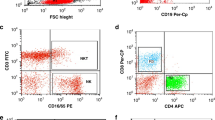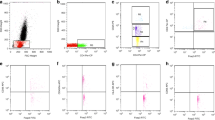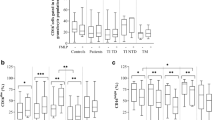Abstract
In vitro, fetal hemoglobin (Hb F) inhibits the aggregation of Hb S, and this may be clinically significant. Alterations in B and T lymphocytes seen in sickle-cell disease may be important in the immune deficit in these patients. We examined 16 patients with repeated crises (6 females and 10 males, age 9.3 ±3.4 years) and 15 patients with infrequent crises (9 females and 6 males, age 7.1±3.8 years) to determine the relationship between F cells, Hb F levels, lymphocyte subsets, and the frequency of crises. The proportion of CD2 and CD3 lymphocytes was significantly lower (P=0.015 and <0.0001, respectively) in both groups of patients than controls. CD4 lymphocytes were significantly lower (P=0.018) and CD19 significantly higher (P=0.007) than controls. CD45RO levels in both groups of patients were comparable with matched controls but significantly lower (P=0.002) than adult values. Hb F levels in patients with and without frequent crises were comparable (P=0.067). However, F cells in patients with infrequent crises were significantly higher than in patients with frequent crises (P<0.01). Alteration in the lymphocyte subsets did not correlate with the frequency of crisis in these patients.
Similar content being viewed by others
Author information
Authors and Affiliations
Additional information
Received: 8 August 1999 / Accepted: 22 October 1999
Rights and permissions
About this article
Cite this article
Kaaba, S., Al Fazaa, L. F cells, fetal hemoglobin levels, lymphocyte subsets, and frequency of crises in sickle-cell disease in Kuwait. Ann Hematol 79, 291–295 (2000). https://doi.org/10.1007/s002779900140
Issue Date:
DOI: https://doi.org/10.1007/s002779900140




